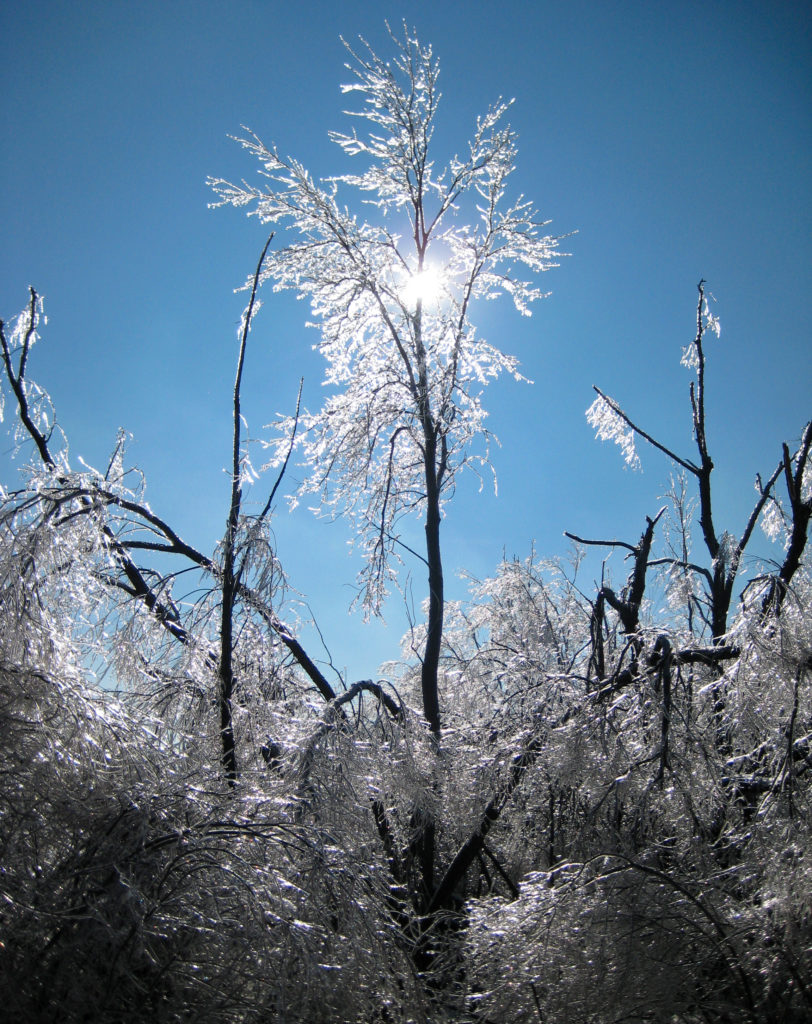Tree species vary in their resistance to ice accumulation. Some develop characteristics that render them more susceptible to ice damage. Others exhibit characteristics that improve their strength and structural integrity, thereby increasing their resistance to ice storms. The following are some of the more common features observed in trees that improve resistance to ice storms.
Tree Features That Improve Resistance to Ice Storms:
Trees that feature excurrent branching patterns, strong branch attachments, flexible branches, a low surface area of lateral branches, and symmetrical crowns are generally more resistant to ice storms. The tree’s seed source also influences resistance.
Excurrent branching patterns are one of three major growth habits in trees. The other two branching patterns are called decurrent and columnar. In an excurrent branching pattern, the main trunk comprises the entire height of the tree, with branches establishing a lateral formation all around it. In decurrent branching patterns, the main trunk comprises about half the tree before splitting into two or more main branches. Decurrent patterns tend to form broader crowns, and require more routine maintenance. Columnar branching patterns feature a main trunk that extends the full height of the tree, with branches only forming at its summit.
Trees that form excurrent branching patterns tend to feature greater stability and more flexible branches, enabling them to better resist ice storm damage. Excurrent branching patterns are common in many conifers and evergreens. Some tree species, such as sweet gum and tulip poplar, establish an excurrent branching pattern when young, but develop a decurrent pattern as they mature. As such, these species are more resistant to ice storm damage when young, but become increasingly susceptible as they grow older.
Tree species that form strong branch attachments are not as greatly impacted by heavy ice loading, and will not incur breakages as easily as those with weak branch junctures. Weak branch junctures are branch attachments indicated by included bark.
Trees that develop flexible branches have a greater resistance to ice accumulation. The elasticity offers additional support, and helps to prevent severe breakages due to ice loading. Younger trees tend to exhibit more flexibility, and are often more resistant to ice storms.
Some tree species, such as black walnut and ginkgo, develop fewer lateral branches. Due to the lack of competition from other neighboring branches, they often flourish, becoming thicker and flush with growth. This type of formation is called a coarse branching pattern. Trees with coarse branching patterns often feature a low surface area of lateral branches. They are more easily maintained, and tend to develop symmetrical crowns. As such, they accumulate less ice, and generally experience fewer breakages.
Trees that form a greater taper of the main trunk are able to support more mass and can withstand heavier ice accumulations. A decreased taper allows for greater bending, and renders the stem more susceptible to failure.
Finally, the seed source of the tree plays a role in influencing its resistance to ice storms. Local variants of tree species that have acclimated to the cooler weather tend to have a greater resistance to ice damage than those that are planted in a foreign area.
Photo courtesy of David Johnson.


